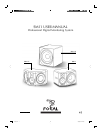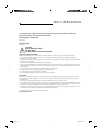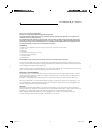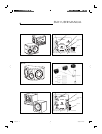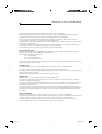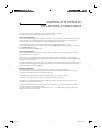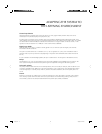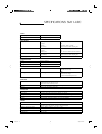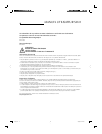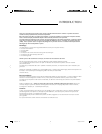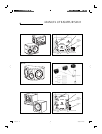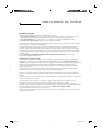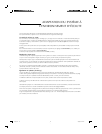
ADAPTING THE SYSTEM TO
THE LISTENING ENVIRONMENT
You will find in this section a brief description of the main features of the control software.
For further information please refer to "Focal Manager" instruction manual.
Level control and mute
Firstly, it is worth emphasizing the benefit of setting the monitoring level on the speakers themselves rather than on the mixing
console: the latter case is inevitably detrimental to overall performance (due to lessened resolution in the digital domain),
contrary to the former case where level adjustment takes place after the final D/A conversion.
Please note that positive values are not allowed, as 0dB corresponds to digital full scale (maximum value).
For easy mutichannel operation, the gain levels can be set both by a Master level adjustment (i.e. applying to all channels) or
by an Individual level adjustment.
The same principle applies to the Mute control.
Sweet spot adjustment
Another, and very significant benefit provided by the SM11 thanks to its digital core lies in its capability to fine tune what is
generally referred to as the "sweet spot".
Technically, what is it all about? Essentially it is about adjusting delays applied to each transducer so that, at the listening
position, acoustic waves generated by each transducer can be perfectly coherent in phase, therefore combine together and be
perceived as a virtual point source.
This requires 3 parameters to be entered by the user: spacing between Left and Right loudspeakers, distance (horizontal spacing)
and height (vertical distance) between the tweeters and the listener’s ears. If a center channel is used, then the distance and
height of this speaker are required too (fig. D).
Shelving equalisation
This facility is ideal for gentle, fairly wide band equalisation of the bottom and top ends of the response.
The LF shelving filter is typically useful to deal with possible excessive level of LF energy resulting from acoustic coupling
associated with close reflecting surfaces: mixing console, nearby walls…
The 0dB reference gives a flat response in anechoic conditions, seldom met in real-life environments.
Theory tells us that a -3dB attenuation in the bottom end should suit half-space conditions.
Generally a few -2 to -4dBs of attenuation is therefore expected as desirable, but specific acoustic environment or other
considerations might dictate other adjustments.
In the top end, shelving adjustment is more left to personal taste, or possibly to mimic the voicing typical of some specific
acoustic environments or other loudspeaker systems.
The range of adjustment in amplitude of the two shelving filters is from +6 to -12dB. The frequency break points are user
defined, within a range of 25 to 16000Hz.
7
notice sm11 7 19/03/04, 15:22:39



